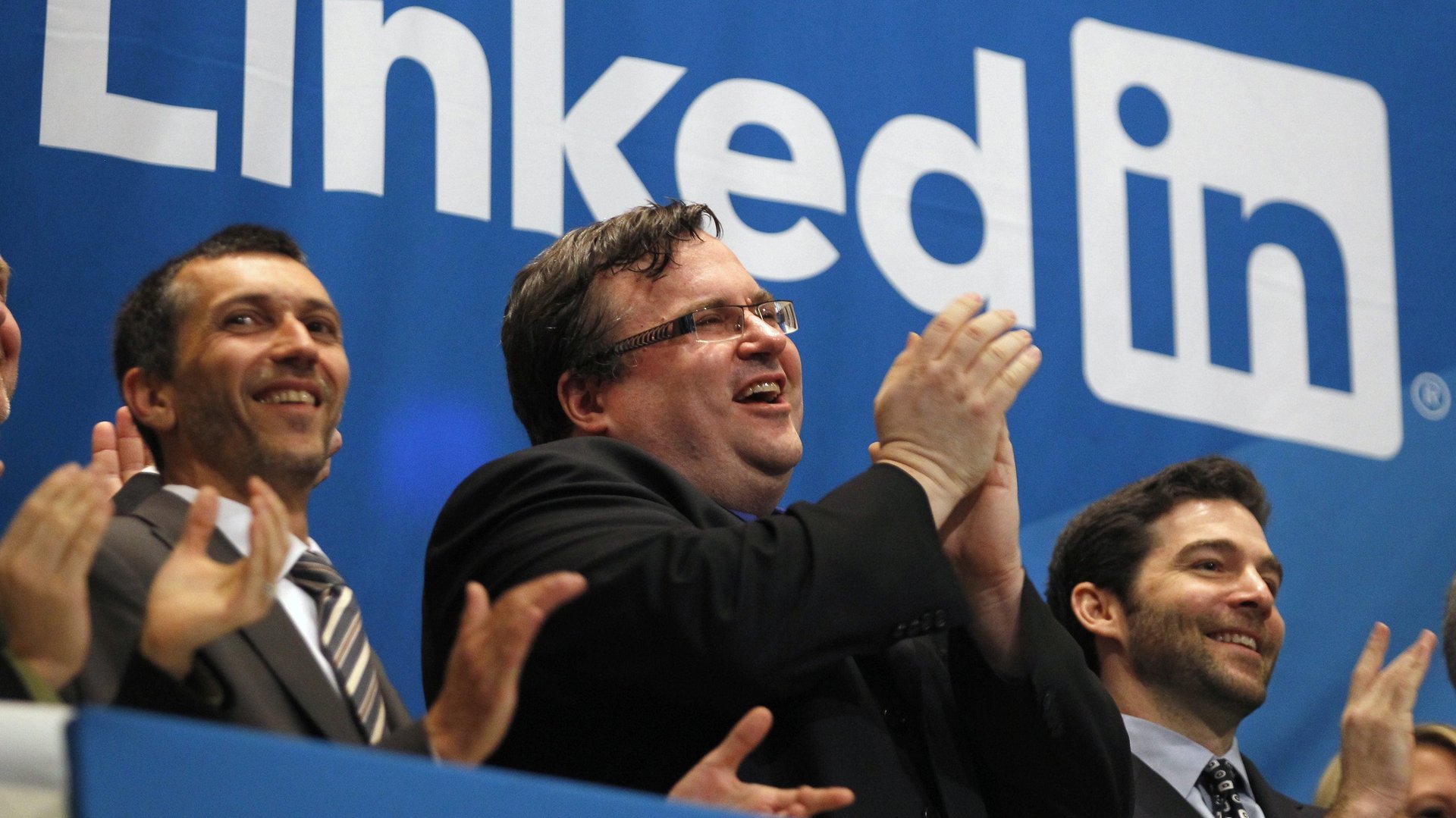LinkedIn’s turbo-charged version for salespeople costs $1,600 a pop
LinkedIn is putting a bigger price tag on its user data. Today (March 21) it launched a new subscription for its Sales Navigator product, used to contact prospective customers, for $1,600 per user annually. That’s compared to $960 annually for the cheapest Sales Navigator subscription.


LinkedIn is putting a bigger price tag on its user data. Today (March 21) it launched a new subscription for its Sales Navigator product, used to contact prospective customers, for $1,600 per user annually. That’s compared to $960 annually for the cheapest Sales Navigator subscription.
For those of us who aren’t corporate salespeople, this particular LinkedIn product may be a bit of a mystery. But it’s a key way the company monetizes its social network of white-collar workers. It works like a souped-up address book, allowing salespeople to search for, and contact, possible customers.
Sales Navigator is sometimes called a “sales intelligence tool” in business jargon, and LinkedIn says companies are spending almost as much on it as on customer relationship management (CRM) systems—a crucial bit of modern sales software made by firms like Salesforce. And the way Sales Navigator develops will be a critical measure of how Microsoft is putting LinkedIn, its largest ever acquisition, to work.
The new subscription level is called Enterprise Edition, and it’s aimed at large companies with tens of thousands of salespeople and hundreds of thousands of employees. One example is the multinational accounting firm EY, which has 30,000 Sales Navigator seats, according to Doug Camplejohn, who heads LinkedIn’s sales products, and a total headcount of 250,000 people. A new feature called TeamLink Extend will allow salespeople in one company to check if a prospect is linked to anyone who works at the firm. So an EY salesperson could potentially work off the contacts of 250,000 EY employees, although employees must opt in to share their contacts. And it works, Camplejohn says. “The average InMail response rate is 15%, so five times the average [business-to-business sales campaign] rate,” he says. “For the top 10% of [InMail users], they get a 30% response rate.”
Camplejohn’s team is also working to deepen integration with a variety of CRMs and platforms, including Gmail. Microsoft is trying to build market share against Salesforce for its own CRM called Dynamics, but LinkedIn has to remain platform-neutral if it hopes to stay relevant. Camplejohn says the tool isn’t specific to any CRM or email system.
Microsoft CEO Satya Nadella has talked Sales Navigator up as a key reason for buying LinkedIn, which generated $186 million in revenue in 2015 (pdf, p. 60). Its role as a communications layer between CRM and email platforms means it could chip away at the dominance of Salesforce—depending on how well it’s integrated with Microsoft’s suite of products.